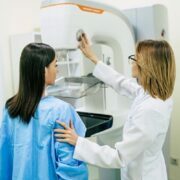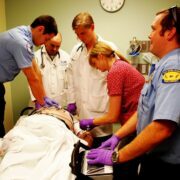The thoracic spine is the part of the spin located above the lumbar region and the cervical spine. It can be affected by different conditions which may occur because of physical trauma and other injuries. A herniated disc is a common injury.
Each of the vertebrae has spongy discs that can become compressed because of an injury, leading to significant pain and mobility problems. When the discs are seriously damaged, replacement might be necessary. The thoracic spine can have herniated discs that can occur anywhere along the spine. Because this condition has subtle or unspecific symptoms, it is often underdiagnosed. Sometimes, a sufferer can only know they have thoracic disc herniation when they get imaging tests for an issue not related to it.
Table of Contents
Symptoms of Thoracic Herniated Discs
Usually, the symptoms of Edison thoracic conditions such as thoracic herniated disc depend on the disc herniation’s size and location. Here are different types of disc herniation and their symptoms:
- Protruding central disc- Often, this herniation leads to upper back pain, depending on the disc’s size and the spinal pressure. Because of the limited amount of space around the thoracic spine and spinal cord, a disc herniation can put pressure on the spinal cord and impact the related nerve function.
- Herniated lateral disc- This herniation can result in abdominal pain and a radiating chest wall.
- Herniated centro-lateral disc- Symptoms of this kind of thoracic herniated disc include upper back pain, myelopathy, and radiating pain.
Treatment for Thoracic Disc Herniation
Those who suffer from thoracic disc herniation may be advised to rest. Also, they may need any of the following:
- Non-steroidal anti-inflammatory drugs (NSAIDs)- These drugs will help reduce swelling, fever, and pain. These medications should not be given to children under six months of age without a doctor’s direction.
- Pain medications- These can help decrease thoracic back pain. They are often prescribed to treat serious upper back pain but only for a short period. Over-the-counter pain medication is usually best for mild or moderate thoracic back pain.
- Epidural steroid injections– These are prescribed for thoracic back pain that persists.
- Surgery- Disc herniation surgery involves a discectomy to remove the protruding disc fragment. Sometimes, it might be necessary to remove an entire degenerated disc and fuse the adjacent vertebrae to stabilize the spine.
Why Is Treating the Thoracic Spine Difficult?
Surgery for this thoracic disc herniation is more complicated than the procedure for a lumbar or cervical herniation. Also, the ribs and sternum make it harder for surgeons to access the thoracic region. Plus, thoracic activity affects the heart and lungs. Such obstacles make complications like pulmonary problems and irreversible spinal cord injury possible during thoracic discectomy.
How Thoracic Spine Surgery Is Approached
Generally, thoracic spine surgery is approached through the chest cavity or the side and portion of the back. In the latter approach, it might be necessary to remove the rib. Usually, the back is not operated on directly, so its muscles won’t be damaged. Once damaged, healing can become uncomfortable and hard.














Comments